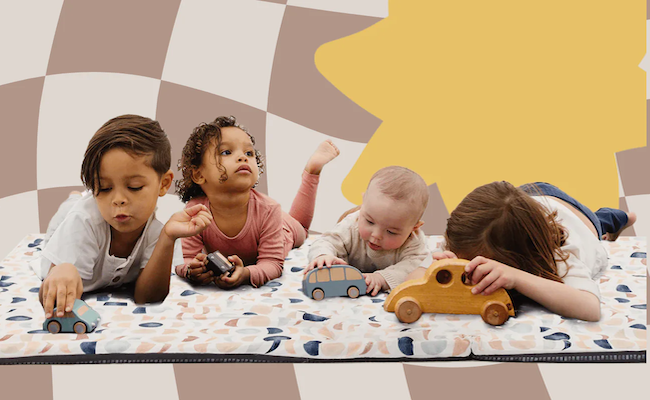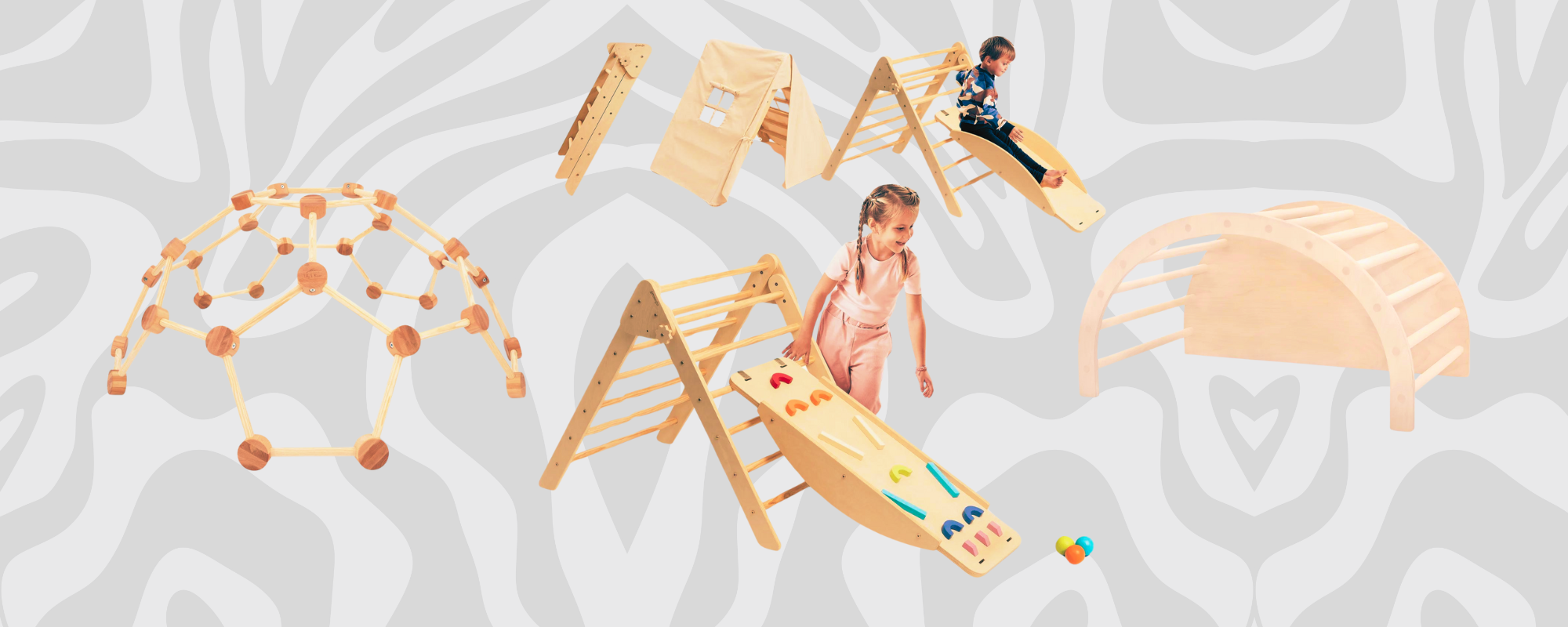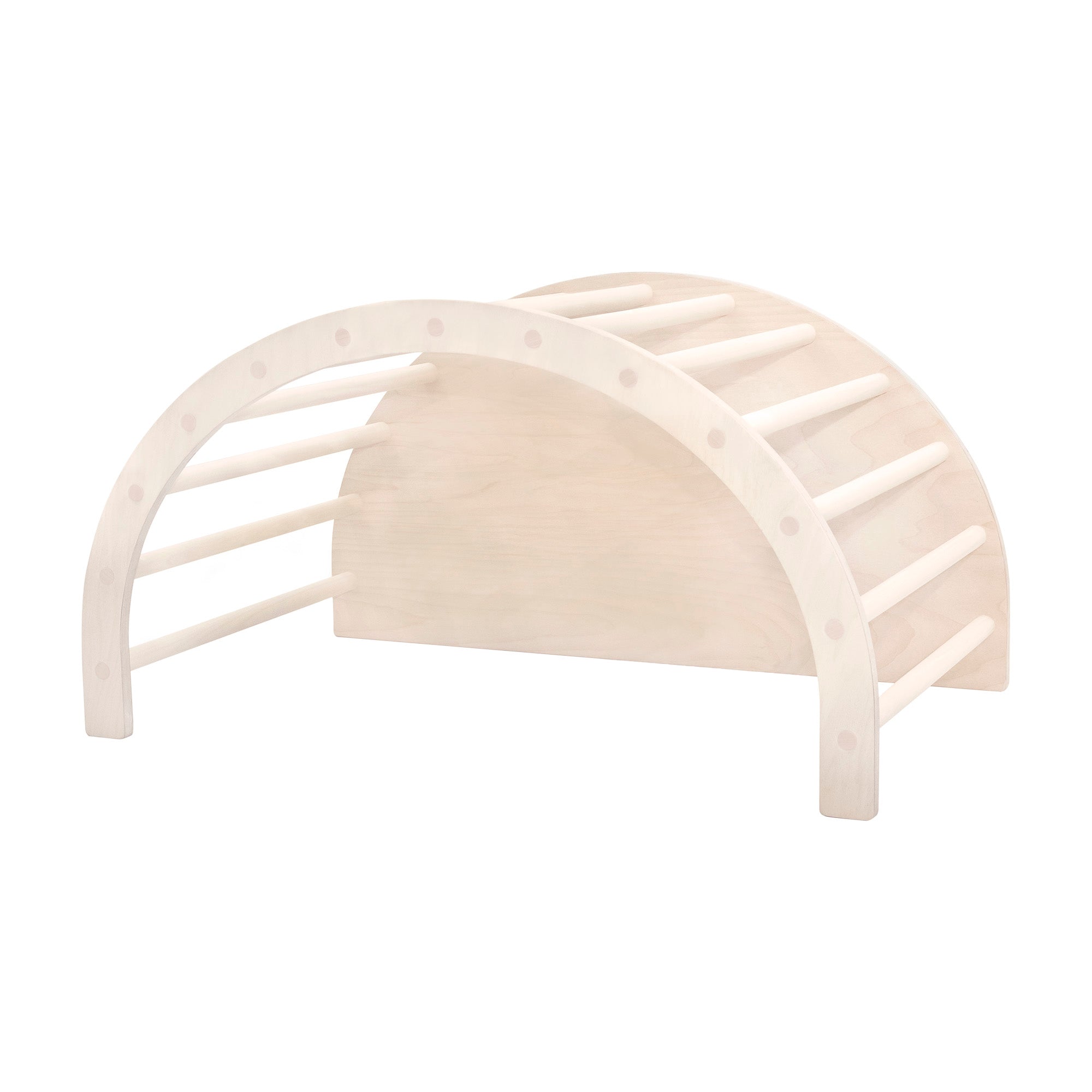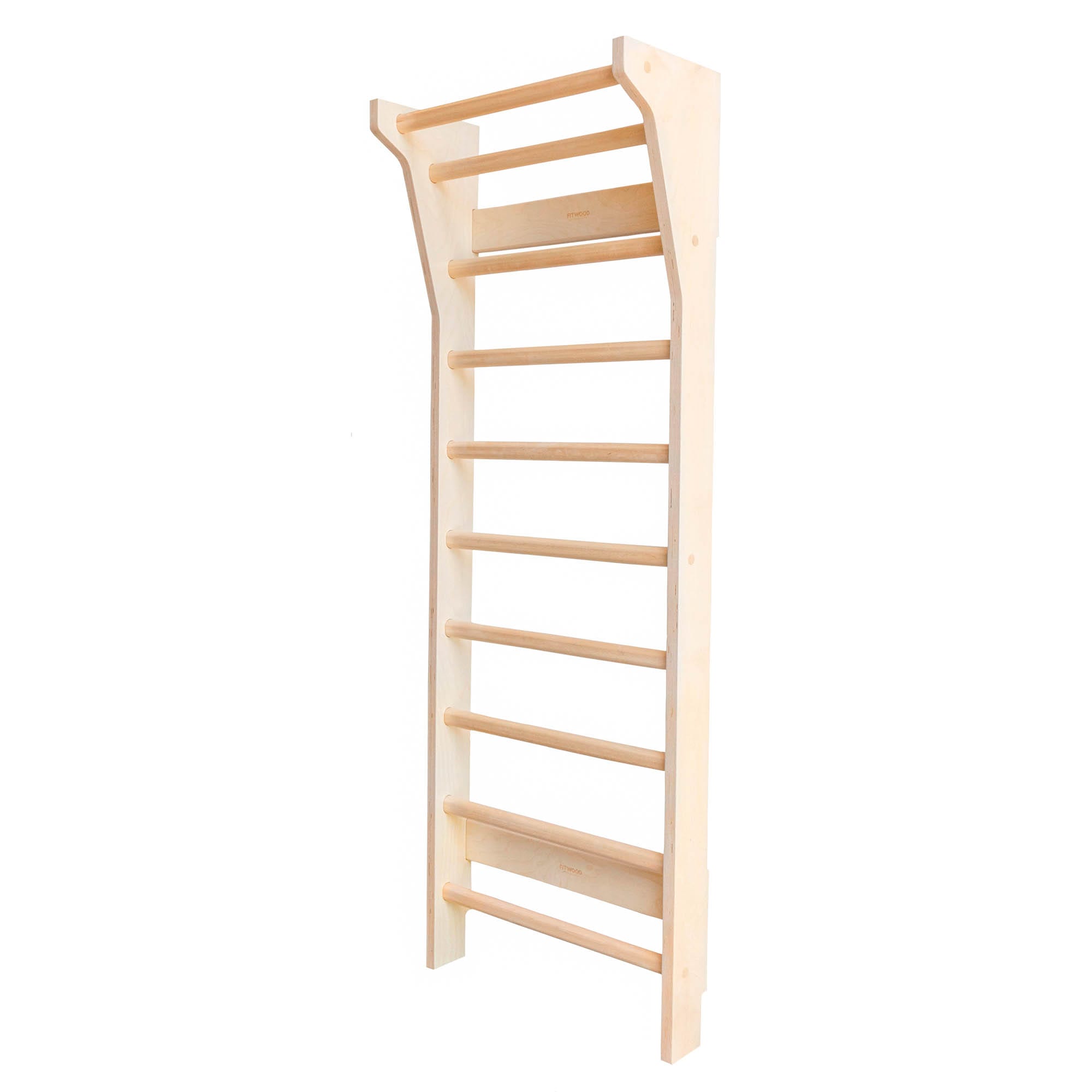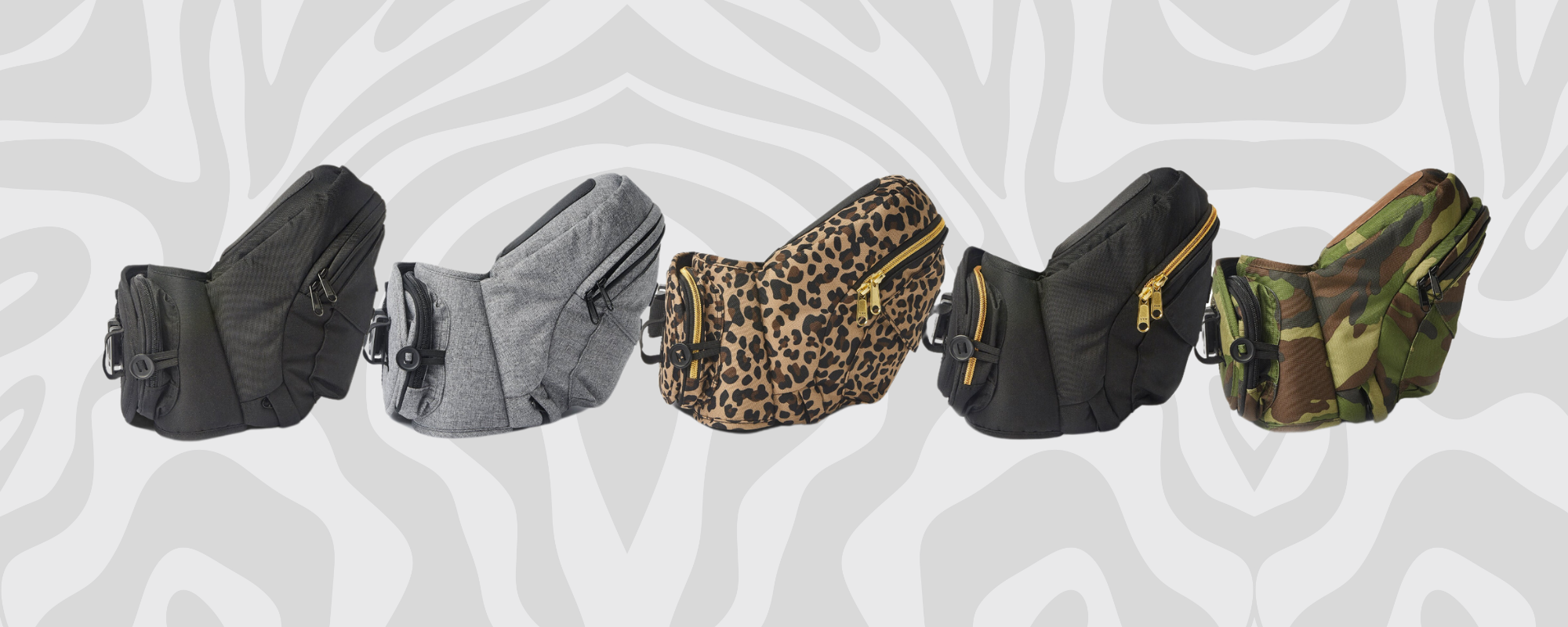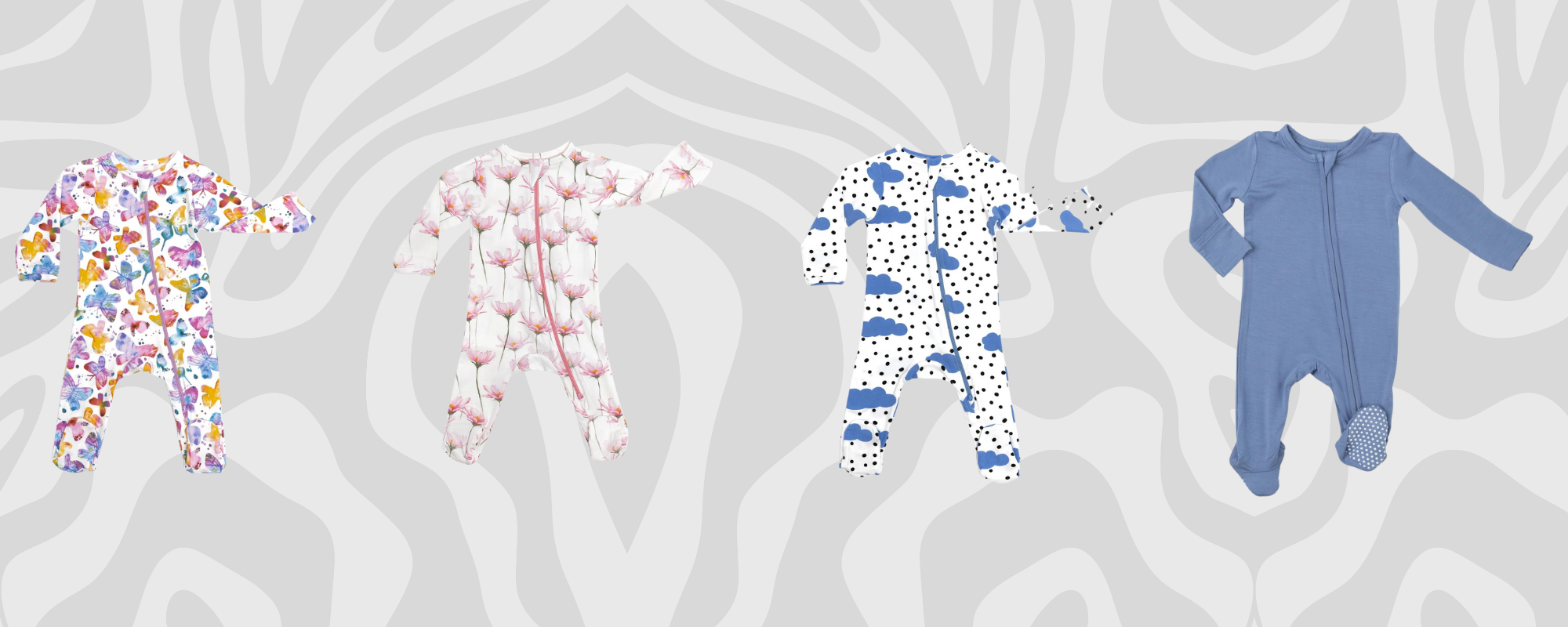Choosing The Best Pikler Triangle: What To Look For (2024)
Author: Francesca, Founder and CEO, EasyTot
Are you considering purchasing a Pikler triangle for your little one but feeling overwhelmed by the multitude of options available? Fear not! In this guide, we'll navigate through the essential factors to consider when selecting the perfect Pikler triangle for your child.
How Tall Should A Pikler Triangle Be?
Here is a comparison of heights for popular Pikler triangles on the market, as measured when the triangle is in the open position. We think that a larger size is better because it will still provide fun till your little one is 6-8 years old.
- Goodevas Pikler Triangle: 37" (height adjustable)
- Bunny Hopkins Large: 36"
- Lily & River Little Climber XL: 35"
- GrowGo Pikler Triangle: 31"
- Bunny Hopkins Starter: 27"
- Lily & River Little Climber: 24"
- All Circles Playbox: 20"
Out of all the Pikler in this list only the Goodevas is height adjustable, so we highly recommend this one over the rest if your baby is still younger than 2 years old.
Can You Tell If A Pikler Triangle Is Safe?
Ensuring the safety of your child during playtime is paramount, especially when it comes to equipment like Pikler triangles. From sturdy construction to non-toxic finishes, there are several factors to consider to guarantee a safe play environment.
-
Spacing between rungs: Opt for Pikler triangles with rungs that are appropriately spaced to prevent entrapment hazards. If the rungs are just large enough for the baby to slide in between, he may remain entrapped at the neck and not be able to get out unless you physically break the rungs. Building codes require that distance between railings rods be no more than 4" wide. So think of 4" as the very maximum that has been generally proven safe.
-
Screw mechanism: Check that the screws and fastenings are securely in place. Just like planes need to be inspected on a regular basis, particularly foldable Pikler triangles need to be checked to ensure that screws remain tight over longer periods of time
-
Smooth wood to avoid splinters: Check that the wood is smooth to eliminate the risk of injury during play as a result of splinters. Run your hand along the surface to ensure there are no rough spots or sharp edges that could potentially harm your child.
-
Use of varnishes or paints: Look for non-toxic finishes that have been tested for safety. While water-based paints are generally considered safe, it's best to avoid painted wood if your baby is still teething to prevent the risk of ingesting chipped paint. Opt for varnishes or finishes that are durable and free from harmful chemicals, ensuring your child's safety during playtime.
What's The Best Material For A Pikler Triangle?
Traditional Pikler triangles are made out of plywood. Unlike solid wood, plywood is made out of multiple sheets of wood in a construction that increases stability. Plywood is also ideal as it is much better at holding screws, which is a key component to ensure the product remains safe over time. The top veneer of a plywood sheet can be derived from many different types of wood - birch, maple, pine, oak, etc - the choice is really dictated by the aesthetic look, however keep in mind that birch is the cheapest material and oak one of the most expensive. Manufacturers sometimes mention plywood, other times just the visible veneer of the plywood sheet (e.g. maple).
Price: Finding Value without Sacrificing Quality & Safety
Prices for Pikler Triangles vary dramatically from brand to brand. Comparisons are difficult because each Pikler comes in different sizes and materials. Plus, you may need to consider the design factor and matching accessories that may be available only from certain brands.
To simplify this exercise, here is the price of various Pikler triangles based linear length (1"). Goodevas Pikler stands out over the rest for the best value.
- Lily & River Little Climber: $299 / 24"...................$12.5/in
- Lily & River Little Climber XL: $375/ 35" ............. $10.7/in
- Goodevas Pikler Triangle: $89/37"........................$2.4/in
- Bunny Hopkins Starter: $199/27".........................$7.4/in
- Bunny Hopkins Large: $249/36"...........................$6.9/in
Pikler Triangle Accessories & Play Sets
Most often, Pikler Triangles are used in combination with a variety of accessories, such as a climbing ramps & slide on the reverse side that can be combined with the Pikler to create big play structures. We love GrowGo Kids unique and patented accessories which can be used to turn the Pikler triangle in a marble run, slide, or even a play tent!
Alternatives to the Pikler Triangle
The Climbing Arch
The most popular alternative to the Pikler triangle is the climbing arch. The climbing arch is even more versatile than the original Pikler triangle because not only it can still be combined with ramps and slides, but it can also be used as a rocker. However, it does come with the downside of not being foldable, so it's better suited for larger spaces. The most high end climbing arch on the market is Fitwood's Luoto Climbing Arch. We like that screws are hidden and can be used even as a table or toy storage solution when not in use.
The Dome
Lily & River first developed the idea of the "little dome" - kids can not only climb on the top just as they would for a Pikler triangle, but they can also swing from the bottom and build up a lot of physical strength! If you're on a budget, Goodevas makes a cheaper version of the dome
The PlayBox
We love All Circle's extension of the Pikler triangle with their Play Box. In a single play structure you get a toy chest a box - to be used as a hiding spot - and more classical ladder and slides. Plus, this is a modular system and you could extend it over time to build an even bigger structure.
Wall Bars
The Goodevas team has came up with an ingenious solution where their standard Pikler triangle can be combined with their proprietary accessory to turn into a wall bar. We love the idea as it provides with a much cheaper and multi-functional solutions - should we add easy to store as well - for parents who like to introduce a wall bar to their child's play room.
Outdoor Use: Can You Take It Outside?
Wooden Pikler triangles are designed for indoor use. However, on a dry, sunny day, you could certainly temporarily bring a Pikler outdoor, possibly over a blanket. Just keep in mind that all wood and plywood, even if properly finished, is prone to warping and developing mold if kept outdoor due to humidity (especially overnight).
Is a Play Mat Necessary
We do recommend purchasing a play mat if your baby is younger than 3 years old to cushion inevitable falls. Make sure the mat is large enough to extend at least 2 feet around the Pikler triangle. Make sure that the Play Mat is not too thick (no more than 0.6") so that the Pikler remains stably grounded on the floor.
Age: Is Your Child Ready for a Pikler Triangle?
Pikler triangles are suitable for children as young as six months old, and they can continue to enjoy them well into their preschool years. However, it's essential to supervise younger children during play to ensure their safety. As they grow, they'll develop strength, coordination, and confidence through exploration and play on the triangle.
Do Kids Actually Use It? The Verdict
Absolutely! Children are naturally drawn to Pikler triangles, enticed by the opportunity for movement, exploration, and imaginative play. Whether they're climbing, peeking through the rungs, or creating imaginative worlds with blankets and cushions, Pikler triangles engage children in active, meaningful play experiences.
In conclusion, choosing the best Pikler triangle involves careful consideration of size, price, safety, material, and age appropriateness. By prioritizing quality, safety, and alignment with your child's developmental needs, you can select a Pikler triangle that will provide years of enriching play and exploration.

